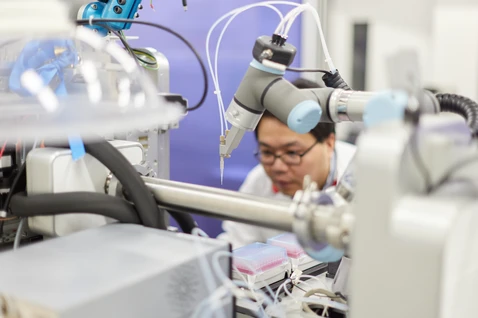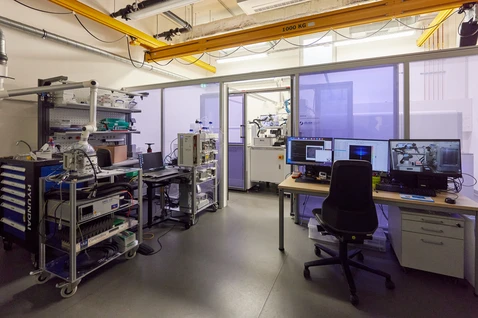Ultrafast quantum effects discovered in low-cost materials
Aktuell, Wissenschaft |

The research team has discovered that bulk formamidinium lead iodide (FAPbI₃) films produced using scalable solution or vapour deposition processes exhibit quantum emissions with extremely narrow line widths (less than 2 nanometres) and decay times in the picosecond range – light emissions that last only trillionths of a second. These effects arise naturally within nanodomain superlattices inside the material, without the need for expensive, precisely engineered structures.
Halide perovskites are promising materials for devices, such as solar cells, light-emitting diodes, and quantum light sources. However, achieving the ultrafast emission rates required for advanced quantum applications has typically been limited to more expensive materials.
Origin of quantum effects in the superlattice
Using ultrafast spectroscopy, cryogenic hyperspectral photoluminescence microscopy, and scanning electron diffraction, the researchers pinpointed the structural origin of these quantum effects: layered, nano-twinned superlattices formed by alternating corner-sharing and face-sharing octahedra. This periodic structure creates a natural, intrinsic quantum-confined environment.

X-ray measurements at MLZ and TUM
The primary contribution to this research came from the team at the University of Cambridge, which managed the sample fabrication, ultrafast spectroscopic measurements, structural analysis, and data modelling. Cryogenic small- and wide-angle X-ray scattering (SAXS/WAXS) measurements, crucial for understanding the low-temperature structural behaviour, were provided by Dr. Baohu Wu at the Jülich Centre for Neutron Science (JCNS) at the Heinz Maier-Leibnitz Zentrum (MLZ) in Garching near Munich and Dr. Renjun Guo and Prof. Peter Müller-Buschbaum from the Department of Physics at the Technical University of Munich (TUM).
This discovery demonstrates that ultrafast quantum phenomena, previously only attainable in meticulously engineered materials, can be intrinsic to inexpensive, easily fabricated perovskite films. It opens up new pathways for designing high-performance quantum emitters for applications in ultrafast computing, communication, and sensing.
Original publication: Dengyang Guo, Thomas A. Selby et al. “Picosecond quantum transients in halide perovskite nanodomain superlattices.” Nature Nanotechnology (2025). doi/10.1038/s41565-025-02036-6
Information on the SAXS/WAXS Laboratory Beamline of JCNS at the MLZ: The SAXS/WAXS Laboratory Beamline